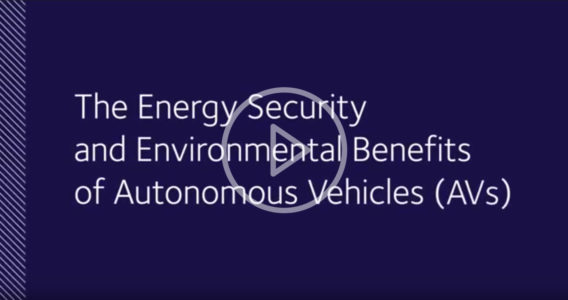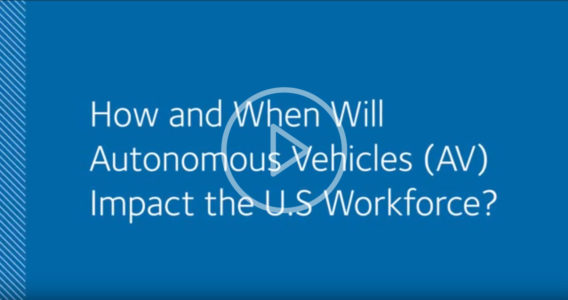Home
America’s Workforce and the
Self-Driving Future
Although they are not yet in commercial use, there is intense public interest in AVs.
The commissioned research painted a detailed outlook for the future economic and labor market impacts of AVs. SAFE found:
-
AVs have many of the characteristics of “catalyzing innovations” whose positive impacts are felt broadly throughout the economy.
-
Significant economic benefits from the widespread adoption of AVs could lead to nearly $800 billion in annual social and economic benefits by 2050, mostly from reducing the toll of vehicle crashes, but also from giving productive time back to commuters, improving energy security by reducing dependence on oil, and providing environmental benefits.
-
A study of traffic patterns and job locations found that some economically depressed regions could see improved access to large job markets for their residents through the deployment of AVs.
-
AVs will create new jobs that will, in time, replace jobs eliminated by automation. Strong workforce development infrastructure can both mitigate employment disruption and speed the evolution of worker skill requirements that will contribute to full employment and economic growth.
-
By pursuing a rapid deployment of AVs, combined with investments in workforce policies that seek to mitigate costs to workers and policies that address other risks or costs that might emerge alongside greater AV adoption, the United States can enjoy the full benefits of AVs as soon as possible while simultaneously preparing the workforce for the jobs of the future.
-
The economic and societal benefits offered by AVs in a single year of widespread deployment will dwarf the cost to workers incurred over the entire multidecadal deployment of AVs when measured in purely economic terms. The benefits of AVs are sufficiently large to enable investment of adequate resources in assisting impacted workers.
Economic and Societal Impact
-
Accident Reduction: Using a conservative methodology in which we assume AVs would only address crashes resulting from a gross driver error (e.g. distraction, alcohol, and speeding), the annual benefit would exceed $500 billion.
-
Reduce Oil Consumption: By precipitating a shift away from petroleum as the dominant fuel source, AVs can substantially reduce America’s reliance on oil.
-
Congestion: Improved safety from AVs and better throughput (e.g. through reduced bottlenecks) could significantly reduce the current costs of congestion.
-
Improved Access to Retail and Jobs: SAFE modelling of road speeds around specific retail establishments found that the increased willingness of shoppers to travel—even by just two minutes each way—could increase mall customer base by nearly 50 percent in some instances. SAFE modelled how increased traffic speeds from AV adoption and greater willingness to travel could impact the number of jobs within reach.
“Widely adopted technologies can transform our way of life and improve economic welfare at a national scale.”








